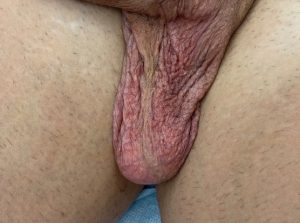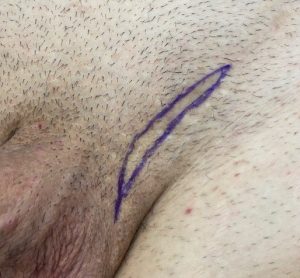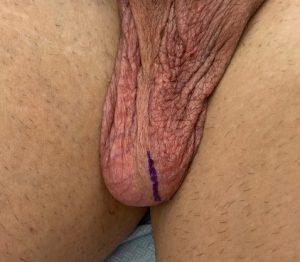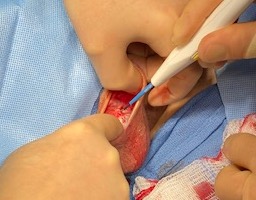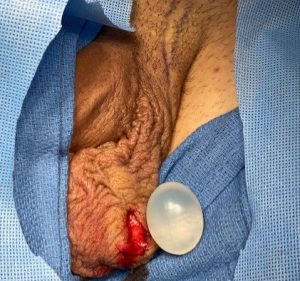Background: Testicular cancer results in lost of the affected testicle which is often is not replaced at the same time. Ensuring that the cancer is completely gone takes precedence over a normal appearing scrotum. When a testicular implant can be placed depends on when the cancer surgeon feels it is appropriate to do but often is years later when the patient is ready to do so.
With the surgical removal of the cancer not only is the testicle removed but it may be necessary to also excise/sample lymph nodes. This will extend the groin incision higher up onto the lower abdomen to do so. This adds to the residual adverse aesthetic effects of the surgery with a scrotal volume deficiency and a prominent scar.
Replacing the lost testicle and revising the groin scar can be done at the same time…but not through the same incision even though this seems to be obvious to do so.
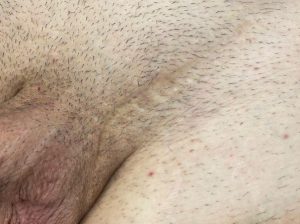
While the groin scar revision was to be a long elliptical excision, a lower midline raphe scrotal incision was used for the implant placement. It is a long dissection down from the groin through scarred tissue. With the goal of a low hanging and supple testicle implant placement it is far better to approach it low through a midline tape incision which will heal in a scarless fashion. This avoids the entire scarred testicle area and ensures there is not chance it retract after surgery up into a high position.
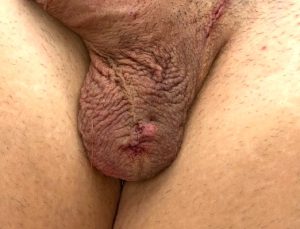
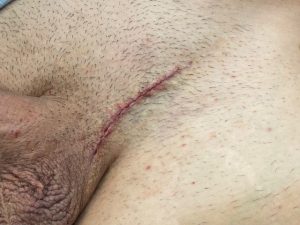
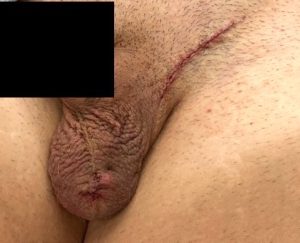
Case Highlights:
1) Testicular cancer results not only in a lost testicle but often has a long oblique scar that crosses the groin area from where the procedure was performed.
2) Secondary testicular replacement can be done using ultrasoft silicone implants placed through a lower midline raphe incision…not the original groin incision.
3) With the testicle implant placement the groin scar can be revised at the same time.
Dr. Barry Eppley
Indianapolis, Indiana




